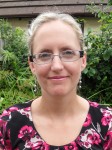On Friday 4th April 2014 the Science Communication Unit (SCU), at the University of the West of England, Bristol held its second Evolving Science Communication conference. I talked about the run up to this conference in a previous post.
The conference celebrated 10 years of science communication programmes based at the SCU and it was lovely to see that around a fifth of delegates on the day were our graduates.
The programme was packed with interesting plenary talks, vibrant presentations and quick paced PechaKucha chats. The Science Communication Unit @SciCommsUWE Twitter feed captures some of the online discussion, and we’ve also created a Storify of the day.
In my first blog post I talked about the combination of theory and practice and as I expected this was implicit in a good deal of the discussion. Whilst I can’t cover all who presented on the day, there were a few presentations where this theme was particularly relevant.
Jennifer Garrett, a graduate from 2013, discussed her MSc project research, in a talk titled The Building as an Exhibit: Communicating Environmental Sustainability in Science Centres. Jennifer’s work is fascinating, she examined how science centres, in particular At-Bristol, deliver sustainability communications in their own actions. As Jennifer put it: “How does what they preach match practice?”
As with many of the presentations on the day it was impossible to consider how Jennifer’s project would have worked without embedding current theory and relating that to the context of practice. Theory was crucial to her research. In turn her research provides recommendations to be taken up in practice. As Jennifer said in the context of sustainability, “knowledge and action equals power” and arguably the same might be said of the role of such science communication projects, which generate knowledge that in turn promotes practical action.
Melanie Knetsch, Deputy Head of Communications at the Economic and Social Research Council, questioned whether academics can really engage “hard to reach audiences”. As Melanie intended, the concept of “hard to reach” provoked all sorts of opinions among delegates and their practice, which she sought to capture in her opening interactions with the audience.
However, the importance of theory and its role in activities was influential in other ways. Melanie discussed her motivations to undertake postgraduate science communication training a few years ago, one of which was that to make an academic argument for research communication “you need to know the theory”. Whilst some social science research has implicit applied implications (Melanie presented an absorbing Celebrating Impact prize video that captures this), as with all areas of research, some academics are interested in the “academic questions” alone. Thus for those professionals like Melanie, mediating those differing perspectives between theory and practice is also important.
Ellen Dowell, who is based at the University of Surrey and Imperial College, London showcased an impressive collection of “creative, collaborative and playful approaches” to public engagement which she has produced for Einstein’s Garden at the Green Man Festival. With focuses as diverse as low carbon technologies, the endocrine system and vascular system, the examples Ellen presented did not shy away from vibrant, dynamic, artistic performances that scientific and medical researchers were an integral part of.
Personally, I was completely enthralled by the video clips Ellen presented, including Blood Lines, a collaboration with the National Heart and Lung Institute and a textile designer.
The video clips reminded me of a statement Emeritus Professor Frank Burnet made in his opening plenary “one quote is worth 15 pie charts”. However Ellen, like many of the other presenters on the day, hadn’t left it there. For example, you can find a fuller evaluation of projects she’s been involved in, like Pedal Power Physics, via the British Science Association’s Collective Memory.
As Imran Khan asked us what we’d like the British Science Association to do over the next ten years, I wondered what sorts of questions we might be considering then. Five years on from our last conference, some topics have shifted in emphasis: community partnership, interdisciplinarity, behaviour change and nudge are newly emerged, while old friends like PUS to PEST, employer needs and the role of the media still crept on to the agenda.
Will theory and practice still be relevant? I expect so but it will be interesting to see if developments in social media, open access and research impact influence the debate if we revisit it then.
Finally, there was one last reminder to me of the combination of theory and practice in our graduates work. Antony Jolliffe, who carried out his MSc research on the work of Sir David Attenborough a couple of years ago, and who currently works for the BBC’s Countryfile, kindly showed me a photograph of a signed copy of his MSc dissertation, surely an indication of the relevance of both theory and practice.
Clare Wilkinson is a Senior Lecturer based at the Science Communication Unit, University of the West of England, Bristol. Clare is a growing expert in the field of research communication and a committed and innovative educator. Her work has been funded by a variety of funders including the ESRC, British Academy and Wellcome Trust. Clare’s research has been published in journals including Science Communication, Public Understanding of Science and PLoS One. In 2009, she co-authored Nanotechnology, Risk and Communication with Alison Anderson, Alan Petersen and Stuart Allan for Palgrave Macmillan.
The Science Communication Unit is internationally renowned for its diverse and innovative activities, designed to engage the public with science, as well as its commitment to training would-be science communicators via dedicated postgraduate courses and knowledge exchange activities. The SCU is a UWE Centre of Excellence and branches two UWE faculties, the Faculty of Health and Applied Sciences and the Faculty of Environment and Technology.

